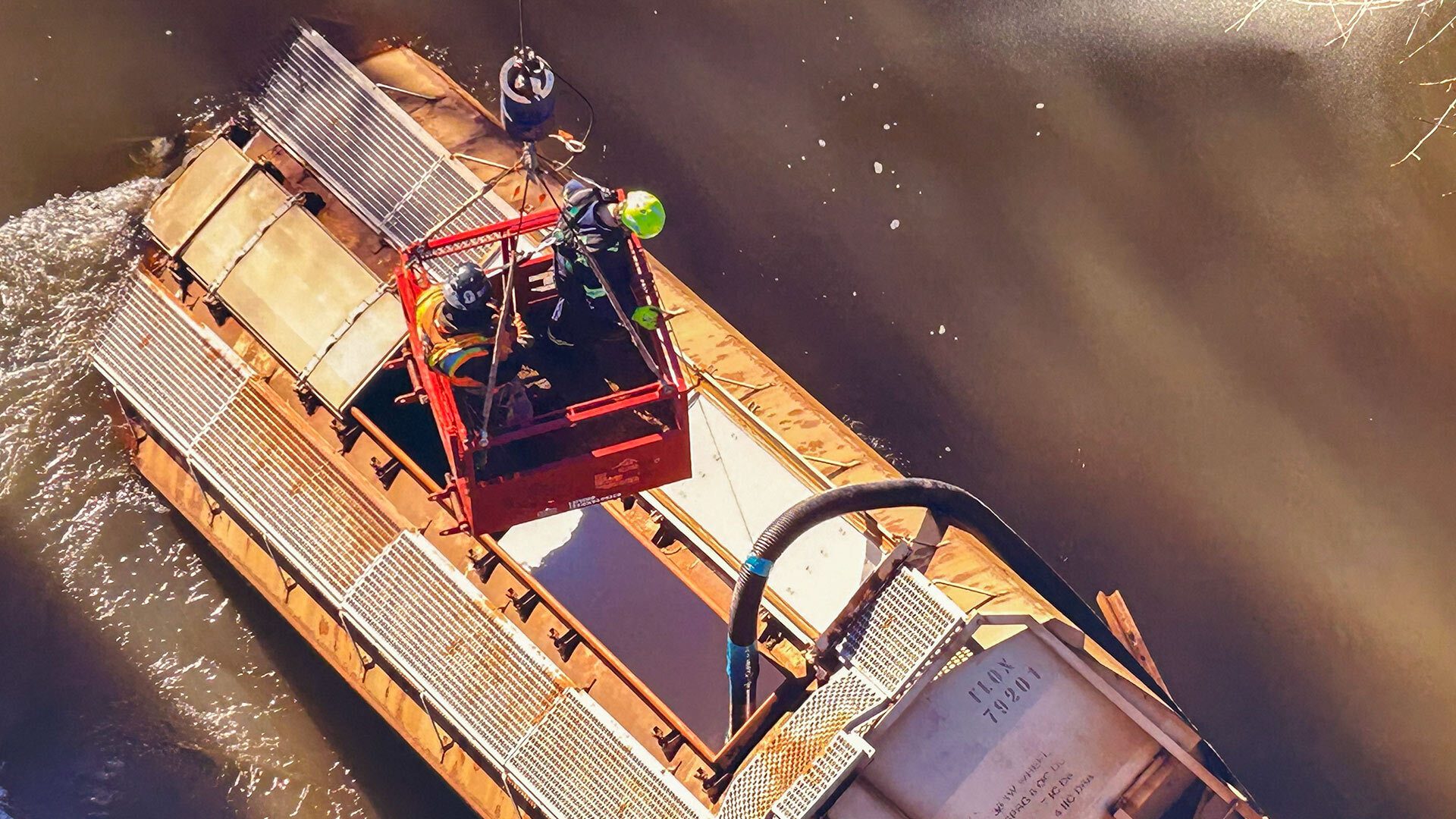- August 14, 2025
- By Philip Merrill College of Journalism Staff
Since the 2023 derailment of 53 railway cars in East Palestine, Ohio, led to an explosion and fire of toxic chemicals, efforts to expand the regulation of trains carrying highly hazardous materials have stalled in Congress and current safety recommendations have been ignored, according to a new investigation from the University of Maryland’s Howard Center for Investigative Journalism and academic and media partners.
The investigation, which news outlets in the U.S. and Canada began publishing this month, found a train derails and spills at least 1,000 gallons of hazardous material in the U.S. about once every two months. Nearly half of those derailments resulted in evacuations; since 2015, a quarter resulted in a fire or explosion.
The team of journalists also found railroad bridge safety across the U.S. is severely compromised by minimal federal and state oversight, and local emergency responders may be ill-equipped to handle derailments of trains carrying hazardous material.

The series of stories shows the consequences of the lack of transparency in the North American 140,000-mile freight rail network, from the movement of hazardous materials to secrecy around track inspections to the ability of first responders to safely handle derailments, said UMD Howard Center Director Kathy Best.
“This is yet another opportunity for students to gain important hands-on experience producing journalism that makes a difference during their time at Merrill College," she said.
The UMD Howard Center, based in the Philip Merrill College of Journalism, brings together professionals and students at Maryland and around the country to publish impactful journalism. It partnered on “Off the Rails: Exposing Risk and Regulatory Gaps in North America's Railroad Industry” with Merrill College’s Capital News Service, Arizona State University’s Howard Center, the University of British Columbia’s Global Reporting Centre, the University of Oregon, NPR, CBC and The Narwhal. The series will run through the end of the year. Stories will be distributed by The Associated Press.
Using unprecedented access to data from RailState LLC, which captures images of every car on every train moving through large swaths of the U.S. and most of Canada, the UMD Howard Center put together a reporting collaboration of university-based and professional newsrooms to provide information the railroads don’t want to share.
The initial “Off the Rails” stories report, among other findings, that a significant number of fire departments do not have specialized hazmat teams, and volunteers often make up the majority of staffing in smaller departments.
In addition, private rail companies are largely in control of inspecting and maintaining their own bridges, and do not publicly disclose the results of their inspections — unlike the systems in place to make sure highway bridges are safe. With no tightening of federal regulations after the East Palestine disaster, railroads have to disclose less information to the communities they traverse.
“We found a way around that shortcoming by using a unique data source that allowed us to monitor the movement of hazardous materials,” said UMD Howard Center Data Editor/Principal Lecturer Sean Mussenden.
A tank car on the railway tracks in Blaine, Washington, on March 3 bears a Class 2 hazardous material placard.
Topics
Research